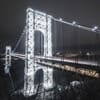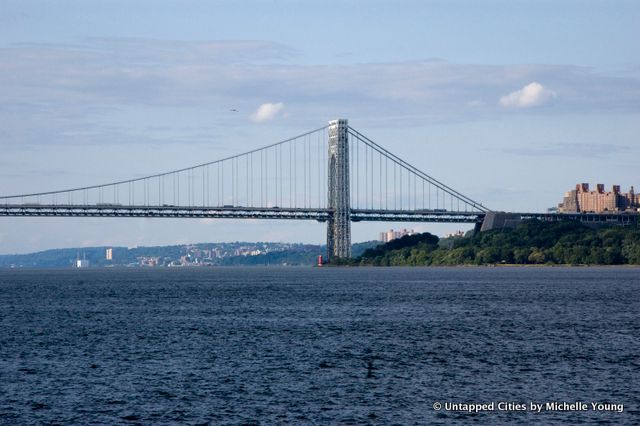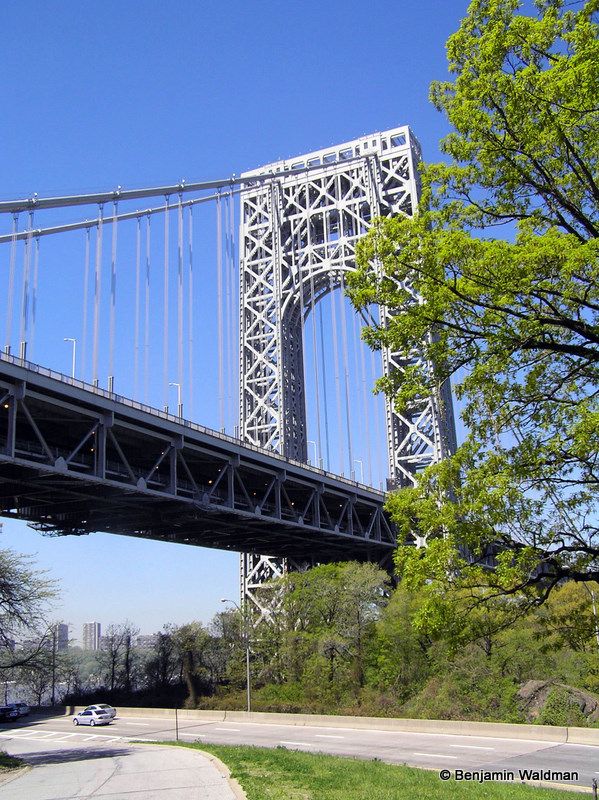After-Hours Tour of the Fraunces Tavern Museum: "Path to Liberty"
Explore a new exhibit inside the oldest building in Manhattan, a witness to history throughout the Revolutionary War Era!


Le Corbusier called the George Washington Bridge “the most beautiful bridge in the world” but its modern allure is a mere accident of time. The bridge’s towers were supposed to be clad in a concrete envelope faced in pink granite chiseled with Beaux Arts flourishes, as well as statuary to cover the points where the barrel cables pass through the roadway on their way to the anchorages. These plans, along with grand plazas for the bridges entrances with heroic statuary and a fountain on the New York side, were dreamt up by Cass Gilbert, who most famously design the Woolworth Building.
According to Le Corbusier, “the towers were to have been faced with stone molded and sculpted in ‘Beaux Arts’ style.…Someone acted…’Stop! No stone or decoration here.’…They dismissed the architect with his decorations.” In truth, ‘twas the depression that killed Gilbert’s design.

Gilbert had been appointed in January 1926 by the Port Authority as architect of the new Hudson River Bridge. Gilbert played with multiple designs for this monumental commissions. Romanesque, Renaissance, and other classical styles melded together to create the distinct design which Gilbert desired. A 1926 trip to Europe convinced him that “the simpler the structure was, the more impressive it would be.

The overall structure was designed by Othmar Ammann. In general, Gilbert left Ammann to his own devices, but did urge him to include elevators to the tops of the towers in order to utilize them as observation decks. In one set of drawings, Gilbert placed a restaurant with a boat drop-off in the New York tower.
Today, the George Washington Bridge remains unfinished. Although Gilbert’s and Ammann’s grand plans were never realized, the end result has been cherished by generations. While its final design can be called an accident, Ammann was ultimately responsible for it. Had he not envisioned the bridge being encased in stone, the towers would have likely been more slender and a result, would have lost their now beloved form.
See more from our NYC That Never Was series.
Subscribe to our newsletter